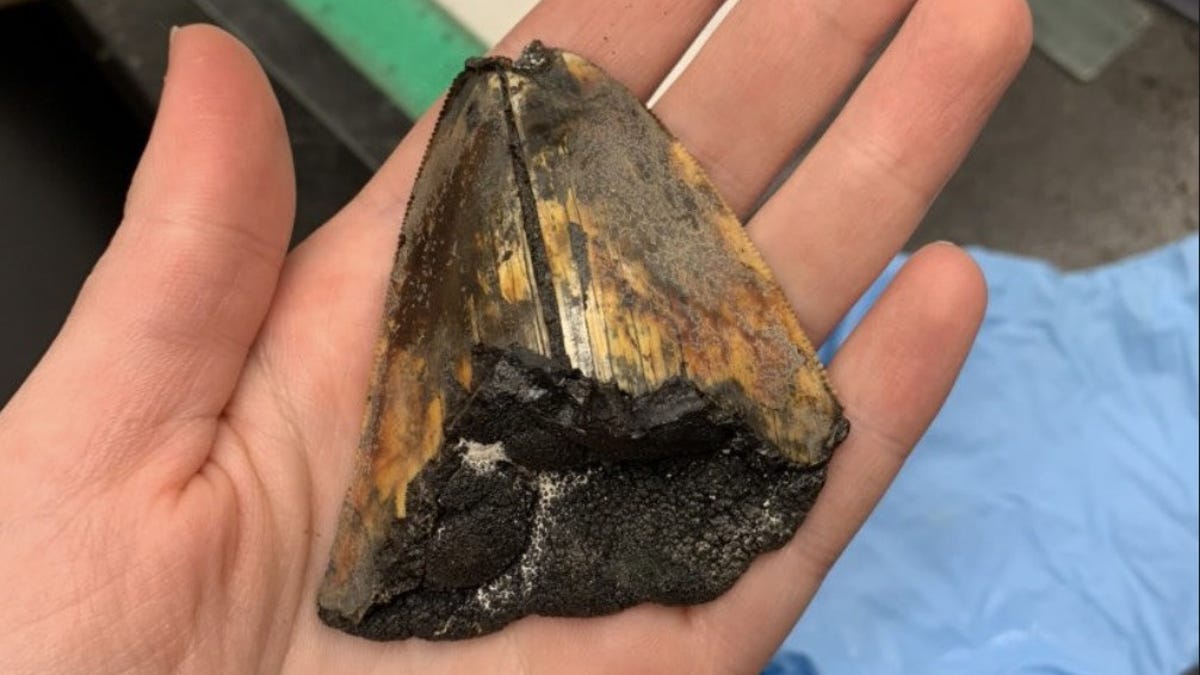Giant Shark Tooth Found Deep in the Ocean May Be Millions of Years Old
The massive tooth was hiding out inside a nodule scooped from the ocean floor.
Talk about chompers. A team of ocean explorers discovered an absolute unit of a shark tooth and it may trace back millions of years to a time when colossal predators roamed the sea.
The Exploration Vessel Nautilus team described the tooth as an "awesome find" on Wednesday. While the researchers didn't share an exact size, a photo of the tooth on a human hand shows a substantial specimen. The jumbo sample was tucked under a ferromanganese coating. Nodules formed from manganese minerals in seawater can build up both inside and around shark teeth.
ROV Hercules collected the nodule that contained the tooth from an unnamed seamount in the Pacific.
The Natural History Museum in London once shared a look at a manganese nodule around a shark's tooth that was collected all the way back in 1875. "Manganese nodules grow at a rate of just ~2 mm per million years, making them one of the slowest geological processes we know of. This means that if a nodule reaches a radius of 50 mm, it could be 25 million years old," the museum explained.
The potential age and large size of the tooth found by Nautilus could hint at its origin story. "We believe it belonged to the infamous extinct megalodon, but only time (and further lab analysis) will tell," the team said. Megalodon was a massive apex predator that died out millions of years ago. Scientists worked out that it could have eaten prey the size of today's killer whales. For big meals like that, you need big teeth.
The fossil find came from an expedition to Johnston Atoll, part of the Pacific Remote Islands Marine National Monument located west of Hawaii. The Nautilus team's remote-operated vehicle Hercules dove down and picked up the nodule at a depth of 10,130 feet (3,089 meters) not knowing there was a tooth hiding inside.
E/V Nautilus is operated by the nonprofit Ocean Exploration Trust, which is on a mission to study the world underneath the waves and share its discoveries with the public through outreach efforts. "The expeditions on Nautilus are only the beginning of exploration as samples are processed and analyzed for years after the ship returns to port," the organization said.
Oceanography scientists Katie Kelly and Rebecca Robinson at the University of Rhode Island Marine Geological Samples Laboratory found the fossil after removing its surrounding material. They are studying it to see if it can be traced to a megalodon. No matter what they find, it's an impressive artifact.


